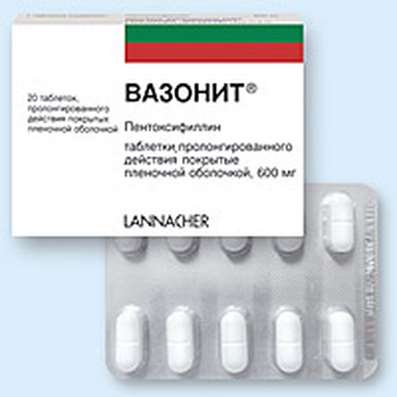Sequela from alcoholism
30 Jan 2019
Diseases of the liver are most typical for alcoholism, and their severity is determined by the severity of alcoholism. There are three increasing severity of liver pathology in alcoholism: fatty degeneration, hepatitis and cirrhosis. With the progression of alcoholism, these forms can successively replace one another.

Alcoholic fatty degeneration is the most common form of liver damage in alcoholism. It is rarely diagnosed because of the scarcity of clinical manifestations. Patients either do not complain of poor health, or talk about a recurring feeling of overfilling of the stomach, flatulence, diarrhea. The main clinical sign of fatty liver disease is its increase; the edge of the liver is rounded, the consistency is rather dense.
The liver is sensitive to palpation. The pathology detected by laboratory tests is negligible. With prolonged abstinence of patients from alcohol their condition is usually normalized.
Alcoholic hepatitis is usually chronic and can manifest itself in two forms: persistent, relatively stable, and progressive. Chronic persistent hepatitis is observed more often than progressive. Like fatty liver disease, it is clinically manifested a little. Symptoms are determined primarily by gastrointestinal pathology. Patients feel heaviness in the epigastric region or in the right hypochondrium, eructation, mild nausea, a feeling of overflow of the stomach, flatulence. The liver is enlarged, usually denser than with fatty degeneration, and slightly painful on palpation. (Heptral can help to cope with this problem).
There are compensated and decompensated forms of alcoholic cirrhosis of the liver.
With alcoholic compensated cirrhosis of the liver, persistent anorexia (refusal to eat), flatulence, fatigue, a tendency to a low-apathetic mood are observed. Often there is a special thinning of the skin with the appearance of vascular asterisks and white spots on them. Sometimes there is a "lacquered" language (shiny), hair loss, weight loss, gynecomastia, weakening of sexual desire. The liver is usually enlarged and dense, has a sharp edge.
Decompensated cirrhosis of the liver from the clinic's point of view is determined by three types of disorders: portal hypertension leading to ascites (accumulation of fluid in the abdominal cavity), as well as to esophagus (through the esophagus) and hemorrhoidal hemorrhage; jaundice with a possible increase in the liver and - in the most severe cases - liver failure with a precoma or coma. In these cases, nausea, vomiting, anorexia (refusal to eat), flatulence, persistent diarrhea develop. Skin covers have either icteric or grayish tint due to the increased content of melanin.
Diseases of the pancreas with alcoholism are manifested in the form of acute and chronic pancreatitis. From the subjective signs of pancreatitis it is necessary to note pains in the abdomen, localized mainly on the left and radiating into the back. Characteristic dyspeptic disorders: a decrease in appetite, nausea, flatulence, unstable stool. At an aggravation of process pains sharply amplify and sometimes become surrounding. There is multiple vomiting, subfebrile temperature, stool retention. When palpation the abdomen is soft, without clear zones of soreness. The pancreas is usually not palpable.
With alcoholic gastritis, patients periodically complain of lack of appetite, nausea, eructations, unpleasant taste in the mouth, pain in the epigastric region and other disorders. The clinical picture of gastritis is often masked by manifestations of withdrawal symptoms. In more severe cases, vomiting occurs in the morning on an empty stomach with an admixture of blood in the vomit, sometimes painful, multiple. When examined, the lagging of the tongue with a grayish coating and slight soreness on palpation in the epigastric region are found.
Acute alcoholic myopathy can develop after heavy drinking-bouts and is characterized by a weakness of sharp soreness and swelling in the muscles of the shoulders and hips.
Chronic alcoholic myopathy is the most common form (up to 60%), manifested by weakness of the pelvic muscles and less often - the shoulder girdle, difficulty in walking, painful muscle spasms, weight loss, muscle loss. A separate group within the framework of myopathies is alcoholic cardiomyopathy. Currently, alcoholism is the most common cause of damage to the cardiac muscle of non-ischemic origin. Alcoholic cardiomyopathy is manifested by fatigue, palpitations, shortness of breath during exercise, orthopnea. Alcoholics with severe heart failure have a poor prognosis, especially when they continue drinking alcohol. Less than 25% of them live more than 3 years. The key to treating patients with alcoholic cardiomyopathy is a complete and constant refusal of alcohol consumption.
If the mother abused alcohol during pregnancy, intrauterine growth retardation, CNS damage in the fetus, anomaly of the facial skeleton develop (Fetal Alcohol Syndrome). Appearance is characteristic: fusion of eyelids in the corners of the eyes, hypoplasia of the upper lip, flattening of the fovea over the upper lip. The ears are often turned back and are irregular in shape, the nose is flat. Typical persistent mental retardation (Phenylpiracetam choline can help to solve this problem). Threshold doses of alcohol that cause fetal alcohol syndrome are unknown; most doctors recommend a complete refusal of alcohol during pregnancy. The severity of the affected fetus varies (from individual subtle defects to the unfolded picture described above).
The trembling of the hands, eyelids, tip of the tongue, limbs is noted in the early stages of chronic intoxication. With an increase in the duration of alcohol abuse, vegetative-vascular crises are intensifying or appearing as panic attacks.

 Cart
Cart





